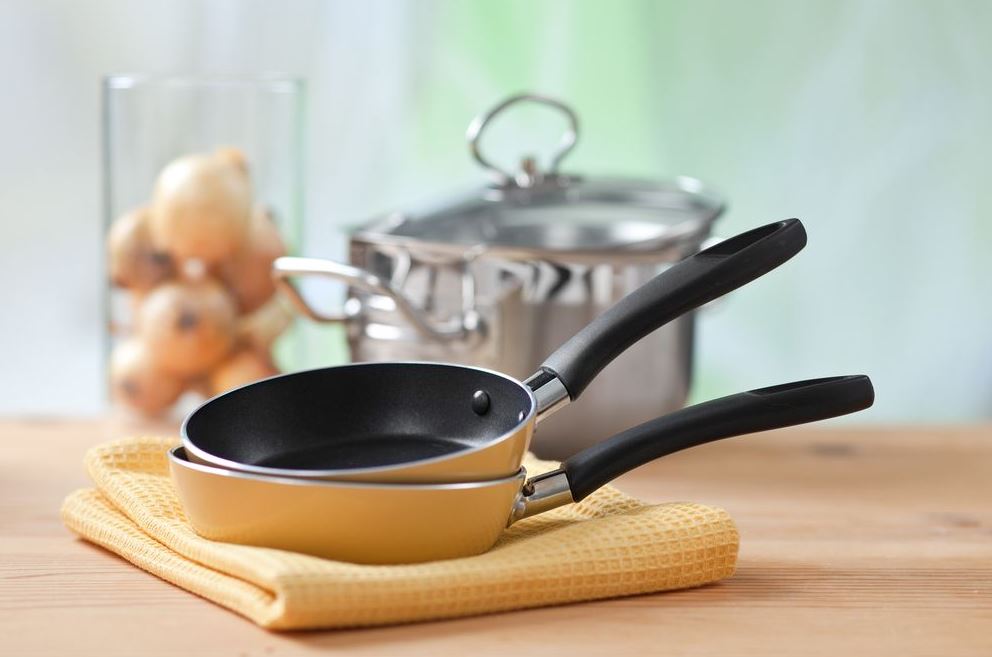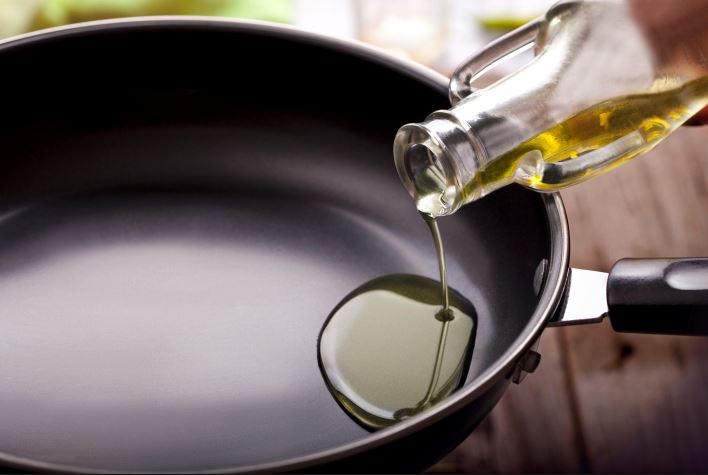Best Way How To Season Your Non-Stick Ceramic Cookware
Non-stick ceramic cookware is a popular choice among home cooks due to its affordability, high heat resistance, and scratch resistance. Plus, most of these items are oven-safe, making them versatile kitchen companions.
Whether you’re cautious about maintaining your kitchen tools or working with a limited budget, this article will help you extend the life of your pots and pans by adding an extra layer of protection to your favorite ceramic cookware set.
In this article, I’ll explain why seasoning your non-stick ceramic cookware is essential and what the process entails. You’ll discover a handful of reasons why many people consider this a clever kitchen hack.
Once you’re convinced about seasoning your frying pan or pot, I’ll provide step-by-step instructions on how to properly season your non-stick ceramic cookware. Additionally, I’ll offer guidance on the types of ingredients to use and which ones to avoid.

Contents
What is the point of seasoning the cookware?
At first, seasoning your cookware might seem like an unnecessary step, but it can actually enhance the performance and longevity of your non-stick pans. While seasoning isn’t required, it’s a smart choice if you want to keep your kitchenware in top condition for as long as possible.
Ceramic pans come with a non-stick layer designed to make cooking with ceramic cookware and cleaning it a breeze. However, with regular use, this non-stick coating can wear down over time.
To prevent this, it’s a good idea to season your pots and pans. In this context, seasoning refers to adding an extra layer of non-stick or scratch-resistant surface using oils.
There are several reasons why seasoning is beneficial:
- Cost savings: Seasoning can significantly extend the lifespan of your cookware, sometimes even doubling its durability. This ultimately saves you money on replacements.
- Easier cleaning: An extra layer of seasoning makes it much simpler to clean off sticky food residue from your frying pans, reducing the time and effort needed for cleanup.
- Repeated application: The seasoning process can be performed multiple times as needed, whenever the seasoned layer begins to wear off. Some manufacturers even recommend this practice to maintain your cookware’s non-stick properties.
Should you season ceramic cookware?
Yes, you should season a ceramic frying pan or skillet.
As mentioned earlier, seasoning your ceramic pots and pans is a personal choice. You do not NEED to season a ceramic pan. However, if you want to maximize the convenience and value of your investment, it’s a good idea to season your kitchenware.
The non-stick coating on your pan may start wearing down over time due to various factors. One reason is the use of oils with low smoke points, such as extra virgin olive oil. Another cause is the use of metal or steel utensils with sharp edges that can scratch the surface of the ceramic pan.
I’ve noticed that many people become frustrated when their non-stick coating starts to deteriorate. It’s easy to blame the manufacturer or question the quality of the product. But it’s important to remember that non-stick layers naturally weaken with use.
Seasoning your ceramic cookware isn’t complicated or expensive, and it’s something any home cook can do. It’s a simple process that can be done in your own kitchen. Plus, you don’t need to season your pans and pots frequently. By seasoning your ceramic cookware just once, you can significantly reduce the likelihood of your non-stick coating wearing away prematurely.

How to season ceramic cookware?
Here is a step-by-step guide on how to season your new ceramic pan.
Step 1: Clean the Ceramic Pan
Before seasoning your ceramic frying pan, make sure to clean the pan thoroughly. Use warm water and dish soap to wash the pan surface. Rinse the pan thoroughly and dry it with a clean paper towel.
Step 2: Apply a Thin Layer of Oil
To season a ceramic pan, you need to apply a thin layer of oil to the surface of the pan. Canola oil is a great option for seasoning your pan. Avoid using cooking sprays as they may damage the ceramic coating of the pan.
Step 3: Heat the Pan
Place your ceramic pan on the stovetop and heat it on medium heat. Let the pan heat up for a few minutes until it’s hot.
Step 4: Apply Another Layer of Oil
Once the pan is hot, use a clean paper towel to apply another layer of oil to the pan’s cooking surface. Make sure to cover the entire surface of the pan with a thin layer of oil.
Step 5: Let the Pan Cool Down
After applying the oil, let the pan cool down. This will allow the oil to settle into the surface of the pan. Use a clean paper towel to wipe any excess oil from the surface.
Step 6: Repeat the Seasoning Process
Repeat the seasoning process at least 2-3 times. This will help to build a protective layer of seasoning on the surface of the pan. Make sure to clean the pan periodically and repeat the seasoning process if you notice that the pan is starting to lose its non-stick properties.
By seasoning your ceramic pan, you can extend the lifespan of your ceramic cookware and enhance your cooking experience. This step-by-step guide will help you to season your pan properly and ensure that you get the most out of your new pan.
Ceramic Cookware Seasoning Tips
Seasoning your ceramic pans is a recommendation often made by non-stick kitchenware manufacturers. The non-stick coating can wear down over time, but seasoning with oils can help prevent this issue.
The process is quite simple and typically needs to be done only once every six months. Some ceramic brands even suggest seasoning their products before using them for the first time.
You’ll need a small amount of cooking oil for seasoning. Although butter can be used as a substitute, it’s important to avoid extra virgin olive oil and soybean oil. Extra virgin olive oil burns quickly and can damage the non-stick layer instead of protecting it, while soybean oil can leave stubborn stains that are difficult to clean.
Also, avoid using oil sprays from aerosol cans. Cooking sprays are likely to contain harmful chemicals and soybean oil.
To maintain the seasoning, simply repeat this process every six months or as needed.
Frequently Asked Questions
Do you have more questions about seasoning other types of pots and pans?
For example, do you want to know if you can use grapeseed oil for seasoning your skillet? Or should you season 100 percent ceramic pans?
Leave a comment below!
Conclusion
In the end, like always, seasoning your cookware might not sound right, and sometimes it even might seem awkward. Regardless of all this, there are many benefits of seasoning your kitchenware.
It is beneficial if you are a person who sincerely takes care of your cookware or is simply reckless while cooking. It acts as extra protection to save your pots and pans from scratches or tears if you use metallic or steel utensils.
The process is straightforward since it takes almost no time to be done. The ingredients are easy to find too and require nothing special. It is one of the easiest ways to extend the lifespan of your ceramic pan.
Related Articles